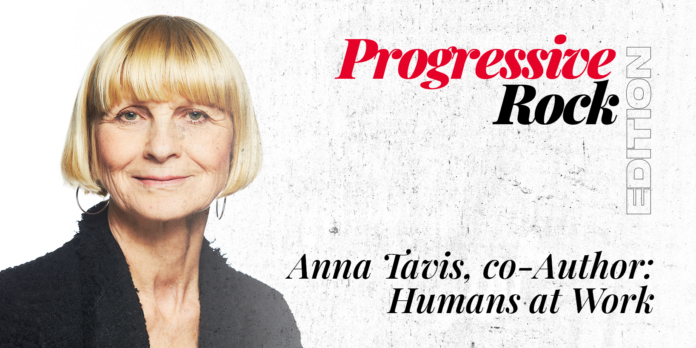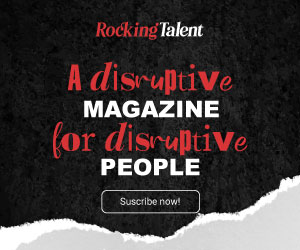Is a recognized thought leader and compelling speaker on HR and the future of work. She was recently in Argentina where she participated in the BenchClub HR Summit 2022. In this interview, Anna analyzes trends in the future of work and shared good practices for building healthy, human-centered organizations.
You are the academic director of the Department of Human Capital Management at New York University, also you write books on topics related to Human Resources, precisely the last one is: “Humans at Work: The art and Practice of creating Hybrid Work Spaces”. What can you tell us about this new perspective that puts people at the center of organizations?
The pandemic ushered in a new era in Organization and People Management. The global health crisis made it abundantly clear that people are indeed the most valuable asset of organizations of all types from private to public and in the not-for-profit sectors. The fact that during the pandemic management needed to pay attention to the wellbeing of the employees to the extent that never had to be done before, was a wakeup call to those companies that took the “revolving doors” approach to management assuming that they can always hire people from outside. The traditional focus of organizations was on performance and productivity but during the pandemic, it became about the retention of employees. Performance and productivity were the outcome of creating supporting workplace experience.
Today, this new approach to managing people is being tested again. Will companies re-commit to making employee experience their focus and allow for more flexible, personalized work arrangements and support the hybrid model of working.
As a result of this shift, the roles of Chief Human Resources Officers were elevated.
The role of CHROs ( Chief Human Resources Officers ) has been elevated in the course of the pandemic. To add more, the importance of People Issues has been elevated to the attention of the Corporate Boards and other most senior governing bodies.
If before, the only topic discussed with CHROs at the Board level was Executive Compensation and Executive Succession. Today, questions of Employee Experience and Wellbeing, Diversity, Equity and Inclusion are being elevated to the Board level. The prioritization of such people specific issues puts CHROs front and center in the enterprise decision process.
How important is the experience of the employees to an organization?
It won’t be wrong to say that the trajectory of the people function today is a shift away from the administration of work towards employee experience. There are two major reasons for that change:
#1. The evolution of work through technology, analytics and more efficient tools and methods.
#2. The changing mental models of what work is about and what it is for. The purpose of work is changing and getting more personalized and values driven.
We will be asking the question of “Why Do We Work?“, more often.
How do you create a healthy work culture? Who does this task depends on?
The healthy workplace culture is the culture created with employees in mind. It is misguided to think that “healthy” workplace culture is about the external perks and benefits etc. First and foremost, healthy workplace is about people’s ability to do their work in the best they can, to achieve their goals and to continue to learn, to be rewarded for the good work they do and receive fair and constructive feedback they need in order to grow. The healthy workplace culture is about inclusive team environment, a manager who is an excellent coach and an opportunity to achieve one’s highest potential at work.
In summary, a healthy workplace is about healthy human connections and relationships first, achievement and growth second.
What to do when there is a high level of turnover?
In the case of high turnover, there are a series of steps that need to be undertaken to “stop the bleeding. ”
Step #1 — Make sure your exit interviews are conducted in a timely way. Have people tell you why they decided to leave.
Step #2 – Make sure everyone leaves on good terms. Always keep the door open for them to return.
Step # 3 – Take care of your people who are staying. Conduct “stay interviews.” Understand what it would take for them to stay, anticipate issues that may compel them to leave.
Step #4 – Take a deeper dive into the culture. Do an analysis of root causes of the departures, identify trends
Step #5 – Get your Managers involved. Managers are the backbone of a healthy organizational culture.
Step #6 – Come up with a plan of action to prevent further attrition. These actions may be specific to your organization
How is the true management revolution achieved?
I am a believer in the evolution of culture. A successful revolution happens in management or elsewhere only when the change is supported from within. No question, what is now called “black swan” events occur. However, for revolutions to succeed, the internal factors have to contribute.
The pandemic is one such “black swan” event. However, the reason we can leap frog into the next generation workplace —the hybrid workplace— is because the pandemic was an accelerator. The pandemic accelerated the evolution of technology, the changes in the mindset and helped reframe the relationships between the employees and the managers.
What good practices can you share with our readers for building healthy, human-centered organizations?
One of the best examples of a healthy organizational culture that not only survived but flourished in the pandemic is Airbnb. In the first days of the pandemic when everyone was convinced that the hospitality business was finished, the CEO Brian Chesky wrote to the employees the most moving letter. In his very personal letter, he explained why he had to lay off 1/3 of his workforce. He apologized and made sure that his employees got a ”soft landing” by providing sizable severance, medical insurance and computers for them.
In just a few month, Airbnb was able to reinvent itself in a digital and remote format. The employees who remained loyal to the company were welcomed back and the business not only survived but successfully grew.
The point in the Airbnb’s pandemic story is that investing in people and caring about them pays great dividends in the long run.
What do you think of the talents in this LATAM region?
I think that Latam is a continent full of incredible talent. I met with students at UADE and UBA. I had conversations with many HR professionals at many conferences and meetings. I am impressed with how eager they are to learn to share and to collaborate among themselves and with others.
I also believe that the distinguishing feature of Latam talent is their creativity and entrepreneurship. Latam talent is global talent.
Something you would like to add and I have not asked you
One aspect of the changing workplace that I would like to flag in the end is that despite acceleration in technology adoption, people should always be the most important investment that any company or organization needs to make.
Anna Tavis | co- Author: Humans at Work, Clinical Professor, Academic Director, Human Capital Management Department, NYU, SPS





